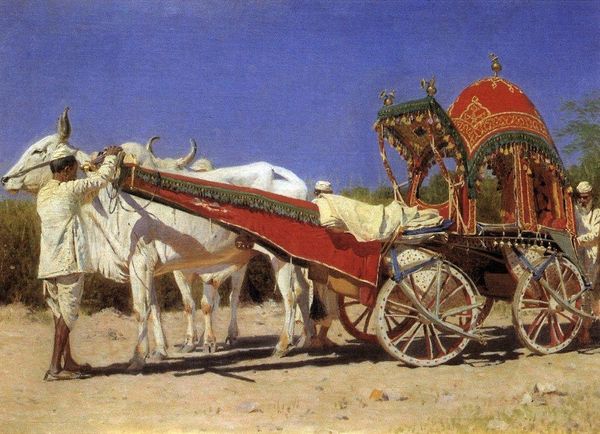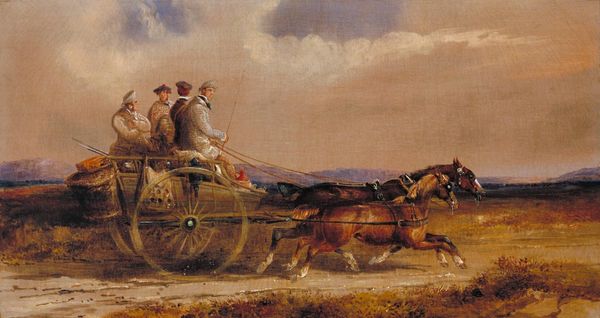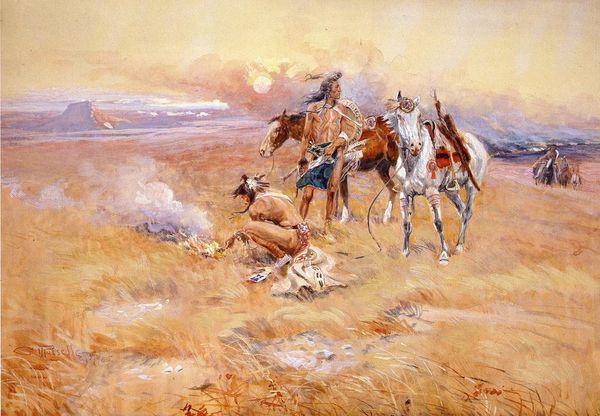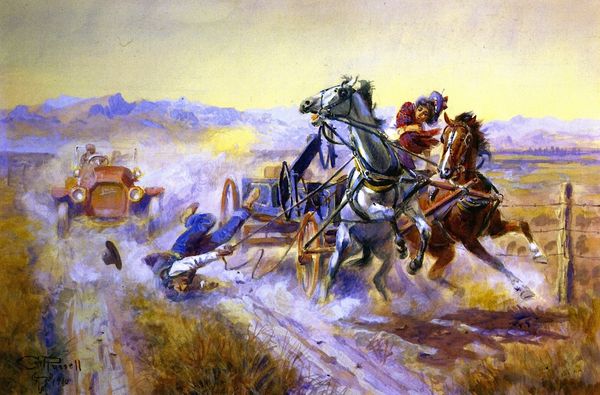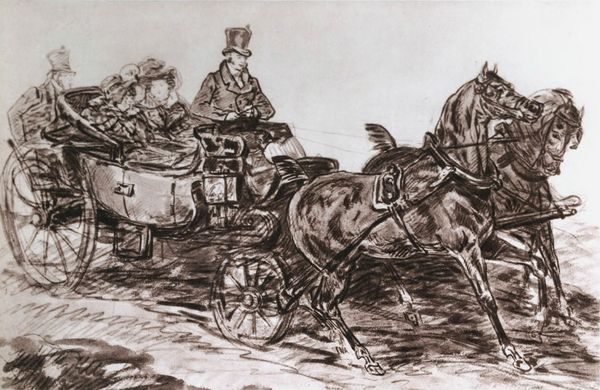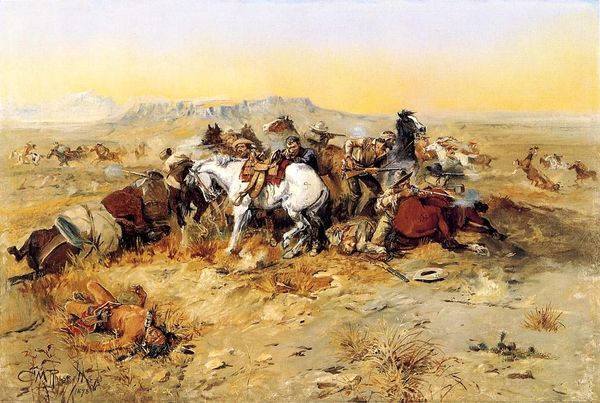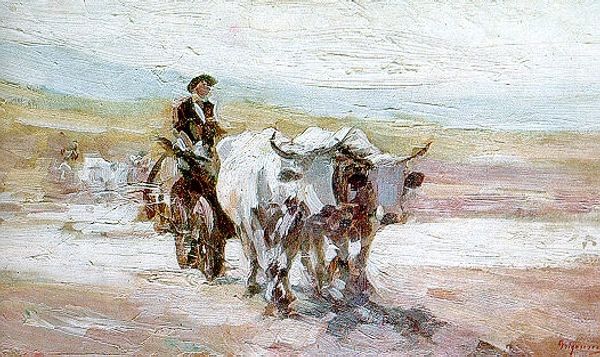
plein-air, oil-paint
#
impressionism
#
plein-air
#
oil-paint
#
landscape
#
impressionist landscape
#
oil painting
#
road
#
horse
Dimensions: 100 x 144 cm
Copyright: Public domain
Editor: This oil painting, "The dump at the door of Asier," from 1887 by Giovanni Boldini, has a hectic, almost unsettling energy. What strikes me is how he's captured movement using such broken, rapid brushstrokes. What do you see in this piece? Curator: Beyond the immediacy of Impressionism, I see commentary on the changing social landscape. Consider the title – "dump at the door." Is this just a depiction of rural life, or is Boldini highlighting the burdens faced by those on the periphery of industrial advancement? Editor: That’s an interesting point. I hadn't considered it as social commentary. I was more focused on the technique, how he seemed to be embracing the "Plein-air." The light feels so authentically captured. Curator: The light *is* striking, but does the harshness of the light perhaps contribute to a sense of unease, echoing the harsh realities of labor? Notice how the horses are rendered – almost frantic. Was this typical of the time? Were artists using such subjects to hint at the increasing demands on the working class? Editor: It does make me wonder if that frenetic style wasn't just capturing light and movement, but the socio-economic upheaval of the era. Is he trying to say something about rural communities in general? Curator: Exactly! We should remember museums as gatekeepers and the public sphere of their construction of political, economic, and social context and the development of the avant-garde art during these historical periods. Boldini painted many society portraits. Did he feel at odds with his privilege? Perhaps. Editor: I guess looking at it now, there’s definitely more going on than just capturing a landscape *en plein air*. Curator: Right, there are the horses, carts, workers. But as viewers, our understanding of that society, and how and why it valued these kinds of images matters so much. Editor: This has given me a fresh view not just on Boldini, but what Impressionism could express. Thank you! Curator: It was my pleasure, I hope you’ll continue your research on these and more questions.
Comments
No comments
Be the first to comment and join the conversation on the ultimate creative platform.

